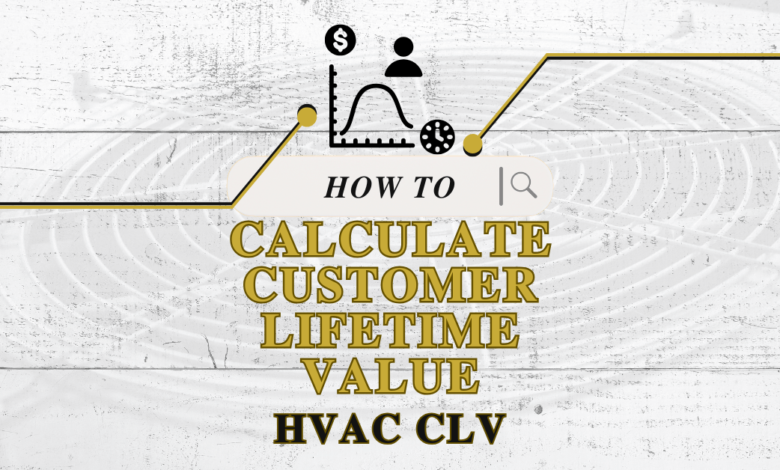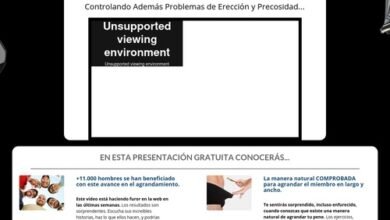Understanding the HVAC Customer Lifetime Value (CLV)

In the competitive HVAC industry, understanding your HVAC customer lifetime value (CLV) can be one of the most powerful tools to drive profitability and sustained growth. CLV represents the total revenue that a business can expect from a single customer throughout their relationship. For HVAC companies, where services range from installation, routine maintenance, to emergency repairs, calculating this value allows businesses to make more informed decisions about marketing, customer retention, and long-term strategy.
In this article, we’ll explore the importance of CLV in the HVAC industry, how it’s calculated, factors that influence it, and how understanding your CLV can improve your business operations. Additionally, we’ll dive into how to figure out your annual CLV to better optimize customer retention efforts.
What is Customer Lifetime Value (CLV)?

Customer Lifetime Value (CLV) measures the total revenue a company can expect to generate from a customer over the entire duration of their relationship.
For HVAC companies, CLV considers multiple customer touchpoints, including system installations, routine maintenance, repairs, upgrades, and possibly even replacements.
Why is CLV Important?
Maximizing Profitability: Understanding CLV helps HVAC companies focus on retaining customers, as the longer they stay, the more revenue they generate.
Informed Marketing Decisions: By knowing the CLV of customers, HVAC companies can make better decisions about how much they should spend on acquiring new customers.
Better Customer Retention Strategies: HVAC businesses can develop targeted customer retention programs and upsell services based on CLV data.
For example, acquiring a customer for a new HVAC installation may cost more initially, but a long-term service contract and regular maintenance can extend the value that customer brings to the business. If HVAC companies know the typical value a customer provides, they can focus their efforts on increasing that figure through customer loyalty, additional services, or maintenance contracts.
Calculating HVAC Customer Lifetime Value
The formula for calculating CLV is relatively straightforward:
CLV = (Average Annual Revenue Per Customer × Average Customer Lifespan (Years)) – Customer Acquisition Cost (CAC)
Let’s break down the key components in the context of an HVAC business:
- Average Annual Revenue Per Customer: This is the total revenue generated from a single customer in one year, which includes installation services, maintenance, repairs, and any other additional services.
- Average Customer Lifespan (Years): This represents the average number of years a customer stays with your HVAC company. For HVAC businesses, the lifespan typically aligns with the lifespan of the HVAC system, which is around 10-15 years.
- Customer Acquisition Cost (CAC): This refers to the total cost associated with acquiring a new customer. It includes marketing, sales, and promotional costs.
Example CLV Calculation for an HVAC Company:
- Average Annual Revenue: $800 (from maintenance contracts and occasional repairs)
- Customer Lifespan: 12 years (for a full HVAC system lifecycle)
- CAC: $500 (cost of marketing and sales effort)
The CLV would be:
CLV = (800 × 12) – 500 = 9600 – 500 = 9100
In this example, each customer is worth approximately $9,100 over the course of their relationship with the company, highlighting the significance of customer retention and repeat business.
Factors Influencing HVAC Customer Lifetime Value
The lifetime value of a customer can vary depending on several factors. Understanding these variables allows HVAC businesses to predict customer behavior more accurately and optimize operations.

Type of Service Contracts: Customers who sign up for annual maintenance contracts or long-term service agreements tend to have higher CLV because they ensure repeat business and regular contact.
Customer Retention and Loyalty: HVAC companies with strong customer loyalty programs or top-tier customer service may retain customers for the life of the system—and beyond. Increasing retention by even a small margin can dramatically improve CLV.
Frequency of Repairs: Some customers may require more frequent repairs or upgrades, leading to additional service revenue. This can boost their lifetime value significantly.
System Upgrades and Replacements: HVAC systems have a typical lifespan of 10-15 years, and customers who return to the same business for system upgrades or replacements are worth far more over time.
Geographic Location: Some regions may have harsher climates, leading to higher usage of HVAC systems. In these cases, the need for more frequent servicing or system upgrades can increase CLV.
How to Figure Annual CLV
Figuring out your annual CLV allows HVAC companies to understand the yearly contribution of a customer to overall revenue. This is a helpful metric for forecasting and setting annual financial goals.
To calculate annual CLV, simply divide the total CLV by the average customer lifespan:
Annual CLV = CLV ÷ Customer Lifespan (Years)
Let’s use the previous example:
- CLV = $9,100
- Customer Lifespan = 12 years
Annual CLV = 9100 ÷ 12 ≈ 758
This means that each customer brings in approximately $758 in revenue per year, excluding the acquisition cost. This is a useful figure for budgeting, resource allocation, and customer segmentation strategies.
It also helps in understanding how much revenue you can expect from your entire customer base on a yearly basis.
Ensuring Marketing Decisions’ ROI Takes CLV Into Account
One of the biggest mistakes HVAC businesses can make is overlooking the relationship between their marketing decisions and the customer lifetime value. While many focus solely on reducing customer acquisition costs (CAC) or increasing short-term sales, marketing investments must be evaluated through the lens of CLV to maximize long-term profitability.
Here’s how you can ensure that marketing ROI takes CLV into account:
- Align Marketing Spend with CLV: If the CLV of a customer is $9,100 over 12 years, HVAC companies can justify a higher acquisition cost if they anticipate keeping that customer for the long term. A $500 acquisition cost is reasonable if the customer is projected to generate $9,100 in revenue. The higher the CLV, the more you can invest in marketing strategies to attract new customers.
- Focus on Retention Campaigns: It’s often cheaper to retain an existing customer than to acquire a new one. By investing in email marketing, loyalty programs, or follow-up calls, you can increase the average customer lifespan, which directly increases CLV. Retention marketing should be a priority, particularly in a business where repeat services like maintenance and repairs are common.
- Maximize Upselling Opportunities: If your marketing strategy includes upselling additional services (like smart thermostat installations, air quality checks, or seasonal tune-ups), this increases the average annual revenue per customer. By nurturing existing customers, you not only boost revenue but also significantly improve your CLV, making your marketing dollars more effective.
- Optimize Campaigns Based on Customer Segmentation: Not all customers have the same CLV. Some may require more repairs, while others may invest in high-end installations or frequent upgrades. By segmenting your customer base and focusing marketing efforts on higher-value customers, you can ensure that your campaigns target the right audience with the right messaging, resulting in higher CLV and better ROI.
- Long-Term Brand Building: Immediate sales-driven campaigns might seem effective, but building brand loyalty and trust can significantly enhance the customer’s lifetime value. Your marketing strategy should not only aim for short-term conversions but also focus on creating a trusted brand that customers return to for years to come. Investing in your brand’s reputation helps improve CLV and, ultimately, justifies higher marketing expenditures.
By understanding your HVAC customer lifetime value and factoring it into your marketing decisions, you can create campaigns that deliver better ROI by balancing acquisition and retention costs against the long-term revenue potential of each customer.
Increasing HVAC Customer Lifetime Value

Now that you understand how to calculate CLV and annual CLV, let’s discuss actionable ways to increase customer lifetime value in your HVAC business.
Offer Maintenance Plans: Maintenance contracts are a proven way to increase recurring revenue and ensure long-term customer retention.
They also provide opportunities for upselling services like filter replacements, system inspections, and seasonal tune-ups.
Improve Customer Service: Exceptional customer service fosters loyalty and encourages customers to return for future services. A satisfied customer is also more likely to refer friends and family, increasing the lifetime value beyond the initial relationship.
Use Data for Personalized Marketing: Use customer data to offer personalized promotions, seasonal offers, and reminders for system tune-ups or upgrades. This not only enhances the customer experience but also increases the likelihood of long-term retention.
Explore Innovative Marketing Tactics: Leverage engaging marketing programs such as the “Dominate a Neighborhood” program, designed to target a collection of neighborhoods through phased communications and dimensional print products.
Encourage Referrals: Word-of-mouth is a powerful tool in the HVAC industry. By offering incentives for customer referrals, you can acquire new customers while boosting the lifetime value of your current customers.
Expand Your Service Offering: Adding additional services, such as air quality testing, smart thermostat installations, or energy efficiency audits, can increase your per-customer revenue and overall CLV.
Conclusion: HVAC CLV
Understanding and optimizing your HVAC customer lifetime value (CLV) is essential for long-term business success. By calculating the total revenue that each customer is expected to bring over the course of their relationship with your business, you can make more informed decisions about marketing budgets, customer acquisition costs, and retention strategies.

Additionally, breaking down CLV on an annual basis provides you with a clearer picture of how much revenue each customer contributes each year. This insight is invaluable for setting realistic financial goals and identifying opportunities to increase profitability through improved service, marketing, and customer loyalty.
In today’s HVAC market, competition is fierce, and customers have a range of options. However, by focusing on long-term relationships and understanding the true value of each customer, HVAC businesses can ensure sustained growth and a competitive edge.
By calculating and understanding CLV, your HVAC company can unlock deeper insights into customer behavior. This allows you to focus on retention and maximizing profitability from your existing customer base. HVAC customer lifetime value and taking the necessary steps to enhance it has never been so important.

We know home services.
Source link





